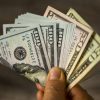The holidays are a tricky time for shopaholics, an estimated 6% of the U.S. population, as bargains beckon and cultural cues egg people on to spend. Compulsive buying disorder, as it's officially known, is generally considered an impulse-control problem. Many compulsive shoppers also suffer from depression, anxiety, substance-abuse or eating disorders, and about half of
The holidays are a tricky time for shopaholics, an estimated 6% of the U.S. population, as bargains beckon and cultural cues egg people on to spend. Compulsive buying disorder, as it's officially known, is generally considered an impulse-control problem. Many compulsive shoppers also suffer from depression, anxiety, substance-abuse or eating disorders, and about half of compulsive shoppers are also hoarders. In this article, Melinda Beck speaks with experts like psychologist Elias Aboujaode, director of the Impulse Control Disorders Clinic at Stanford University School of Medicine, to look at who falls prey to compulsive shopping and why.
The Wall Street Journal, 12/6/2011







Leave a Comment
Your email address will not be published. Required fields are marked with *